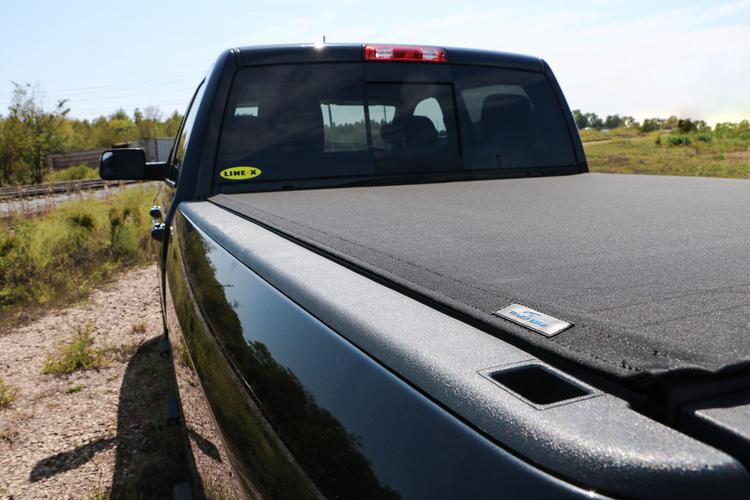Four engines are offered in the 2013 F-150, ranging from a 302-hp, 3.7-liter V6 engine generating 278 lb-ft of torque to a 411-hp, 6.2-liter V8 good for 434 lb-ft of torque. All are paired with a 6-speed automatic transmission and rear-wheel or 4-wheel drive. Depending on the truck’s configuration, the F-150 can tow up to 11,300 pounds of trailer and haul as much as 3,120 pounds of payload. Our test truck came equipped with the engine that can tow all that weight, the optional twin-turbocharged, direct-injected 3.5-liter V6. This popular upgrade, dubbed EcoBoost by Ford, delivers 365 hp at 5,000 rpm and 420 lb-ft of torque at 2,500 rpm. Maximum payload capacity for the EcoBoost V6 is 3,100 pounds.
Our test truck’s twin-turbo EcoBoost V6 provided plenty of power. When accelerating with more than a light foot on the throttle, there was a hint of turbo lag, lasting the first third of the way through an intersection. Then the torque kicked in and the truck leaped forward. The 6-speed automatic transmission worked flawlessly, upshifting rapidly to conserve fuel under normal driving conditions, letting engine revs climb when accelerating hard, holding a lower gear for hill ascents and descents, and providing a Tow/Haul mode had we attached a trailer.
Admittedly, the EcoBoost’s exhaust note isn’t pleasing. Whereas a V8 rumbles with authority, the twin-turbo V6 bleats more than anything, which might be why Ford has done an impressive job of quieting and suppressing engine noise. Nevertheless, there’s no shortage of power, and the turbocharged engine almost certainly feels stronger than the rest of the F-150’s engine offerings in places like Denver or Salt Lake City, where altitude robs a normally aspirated engine of oomph.

If you haven’t driven or, for that matter, ridden in a modern pickup truck, you might find yourself astonished at how well they ride and handle. That is definitely the case with the 2013 Ford F-150, even with our test truck’s stiffer off-road-ready suspension and all-terrain tires. Remarkably refined and composed, our test truck’s stiffened off-roading underpinnings proved firm over bumps, ruts and lousy pavement, yet there’s no denying that modern pickup truck ownership comes with fewer compromises than ever. As might be expected, though, the P275/65R18 Goodyear Wrangler SR-A tires, which dug capably into the dirt, offered relatively low levels of grip on pavement if the truck was tossed into a turn with too much speed.
The F-150’s electric steering provided excellent heft regardless of the pickup’s velocity, and because this is a truck, it’s characteristically slower off-center than a typical passenger car. Also, because this is a truck, city maneuverability proved challenging on a regular basis, such as when negotiating parking lots, parking garages and the like. On an afternoon jaunt to a favorite restaurant, we had to drive to the top floor of a city parking garage just to find a space large enough to park the beast, which cleared the roof by little more than a couple of inches.
As befits a truck designed for towing, the F-150’s brake pedal is firm and responsive, yet easy to modulate. The optional trailer brake controller is located on the dashboard to the right of the steering column, where it is easy to see and reach. Outward visibility is excellent, particularly with the wider towing mirrors present on our test truck, which offered separate blind-zone mirrors on the bottom. Let it be known, however, that wind noise erupts around the mirrors at 45 mph. Below that speed, the cabin is almost silent. On the freeway, above 65 mph, and especially heading into the wind or a crosswind, it gets noisy in the F-150’s otherwise silent cabin, and quickly.




